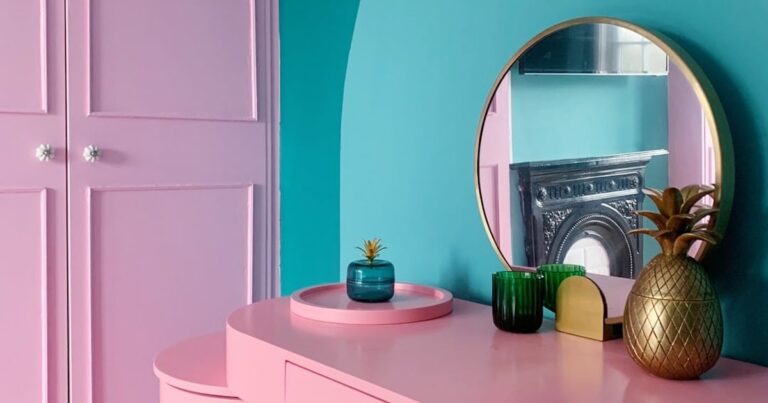In the heart of Gainesville, Florida, where vibrant communities thrive, and residents seek to infuse their homes with personality and warmth, the choice of paint colors becomes more than just a matter of aesthetics. The colors you select for your walls play a pivotal role in setting the tone of your living spaces and influencing your emotions. This article will delve into the fascinating world of color psychology and explore how the shades house painters Gainesville FL paint your walls can affect your state of mind.
The Power of Color
Before diving into the psychology of color, here’s a look at the power that colors hold in people’s lives. Colors can evoke emotions, trigger memories, and influence your behavior. Whether you realize it or not, your brain is constantly processing the colors in your environment and responding to them subconsciously.
The Warm and Cozy Hues
If you’ve ever walked into a room painted in warm, cozy hues like red, orange, or yellow, you’ve probably felt an immediate sense of comfort and intimacy. These colors are known for their ability to create a warm and inviting atmosphere. Red, for instance, is often associated with passion and energy, while yellow radiates positivity and happiness.
However, it’s essential to use these warm colors in moderation. Overuse of such intense shades can lead to feelings of restlessness or even anger. Balance is key when incorporating warm colors into your home’s color scheme.
The Serenity of Cool Colors
On the flip side, cool colors such as blue, green, and purple can instill a sense of calm and tranquility. Blue, in particular, is frequently linked to feelings of serenity and relaxation. This is why it’s a popular choice for bedrooms and bathrooms.
Green is often associated with nature and growth, making it an excellent choice for spaces where you want to promote a sense of harmony and balance. With its regal undertones, purple can create an atmosphere of luxury and sophistication.
The Subtle Power of Neutrals
Neutral colors like beige, gray, and white may seem unassuming, but they play a crucial role in interior design. Neutrals provide a versatile backdrop for other colors and decor elements to shine. They also impart a sense of simplicity and timelessness.
White, for example, is often associated with purity and cleanliness, making it an ideal choice for kitchens and bathrooms. Beige and gray are neutral choices that provide a sense of calm and neutrality, allowing you to personalize your space with accent colors.
The Impact of Light and Dark
Beyond the specific colors themselves, the lightness or darkness of a color can also influence your mood. Light colors open up a space and make it feel more airy and spacious. They can create a sense of optimism and energy.
Conversely, dark colors can make a room feel cozy and intimate. They can evoke feelings of comfort and security. However, be cautious when using dark colors in small spaces, as they can make the room feel even smaller.
Personal Preferences Matter
While color psychology provides valuable insights into how different colors can affect your mood, it’s important to remember that individual preferences play a significant role. What one person finds soothing, another may find overwhelming.
When choosing paint colors for your home, consider your personal tastes and the emotions you want to evoke in each space. Experimenting with sample paint swatches on your walls can help you visualize how a color will look and feel in your home.
Creating Harmonious Color Schemes
To create a harmonious color scheme for your home, it’s helpful to understand color harmony principles. Complementary colors, such as blue and orange or red and green, can create vibrant and balanced combinations. Analogous colors, like blue and purple or red and orange, provide a more soothing and cohesive look.
You can also use color to highlight specific areas or elements in a room. A pop of color on an accent wall or in decor items like pillows and artwork can add visual interest and personality to a space.
A Few Additional Tips
When painting your home, here are a few additional tips to keep in mind:
Consider the room’s function: Think about the purpose of the room and choose colors that align with that function. For example, vibrant colors may be more suitable for a playroom, while soft, muted tones are better for a home office.
Natural light: Take into account the amount of natural light a room receives. Colors can appear differently in various lighting conditions, so it’s essential to test paint samples in natural and artificial light.
Keep it cohesive: Maintain a sense of flow and cohesion throughout your home by using a consistent color palette. This will create a harmonious and visually pleasing environment.
Conclusion
The psychology of color is a fascinating subject that demonstrates the profound impact of paint choices on your mood and emotions. By understanding the emotional associations of different colors and applying design principles, you can create a home with the help of house painters in Gainesville FL that promotes the desired atmosphere and feelings in each space. So, remember that you’re not just adding color to your walls; you’re shaping the emotional landscape of your home.

